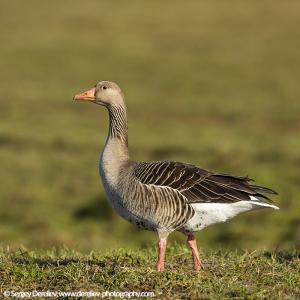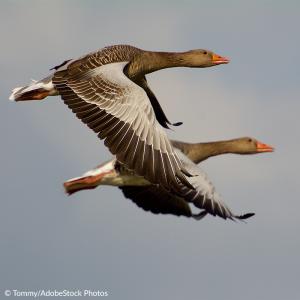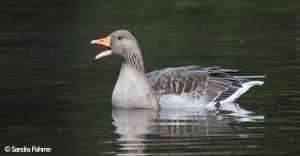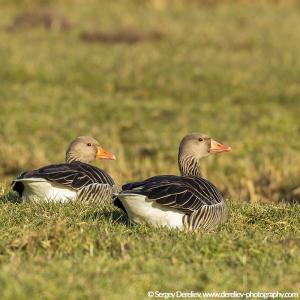Greylag Goose
Greylag Goose
Within Europe, two subspecies of the Greylag Goose (Anser anser) have been recognised: Anser anser anser, which are divided into four bio-geographic populations (Iceland, British/Irish resident, Northwest/Southwest Europe and Central Europe) and Anser anser rubrirostris with two populations (Black Sea and Caspian Sea).
They usually nest in dense emergent vegetation but have also been found to nest in agricultural and urban regions. Outside the breeding season, Greylag Geese tend to feed on a wide range of farmland, semi-natural and natural wetland habitats but can also be found on open waters, estuarine areas or on sheltered marine bays. They are thus considered to be a highly adaptive species that can thrive in a wide variety of habitats.
In response to growing population numbers, AEWA established an International Single Species Management Plan (ISSMP) to mitigate the pressures Greylag Geese are putting on agriculture, air safety and ecological networks. The AEWA ISSMP covers the Northwest/Southwest (NW/SW) European population of Greylag Geese, for which the principal Range States are Norway, Sweden, Finland, Denmark, Germany, Netherlands, Belgium, France and Spain.
The development of an ISSMP for the NW/SW European population of the Greylag Goose was deemed necessary because the population has increased more than seven folded over the past decades, from an estimated 120,000 birds in the 1980s to around 960,000 individuals in the 2010s. Increasing population sizes have been linked to agricultural damage, flora and fauna loss and increased risk for air safety as well as public health.
The ISSMP provides a mandate for developing Adaptive Flyway Management Programmes (AFMPs) which are designed to provide a basis for coordinated decision-making amongst the Range States concerned. The NW/SW European population of the Greylag Goose has been divided into two Management Units: Management Unit 1 consist of Norwegian breeding birds migrating to wintering grounds in the Netherlands and Spain, using stopover sites in Denmark, Germany and France. Management Unit 1 also covers Swedish and Danish breeding birds wintering in the Netherlands, Denmark and southern Sweden. Management Unit 2 (considered primarily sedentary) consists of Dutch, Belgian and north-west German breeding geese.
The AFMPs include Management Unit-specific work plans which will be reviewed periodically by the EGM IWG.
The ISSMP is fully compatible with the EU Birds Directive and the Bern Convention which allow the species to be harvested. According to the IUCN Red List Criteria, the species is categorized to be of Least Concern (LC).
Principle Range States:
Belgium, Denmark, Finland, France, Germany, the Netherlands, Norway, Spain, Sweden.






